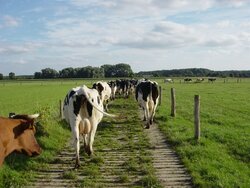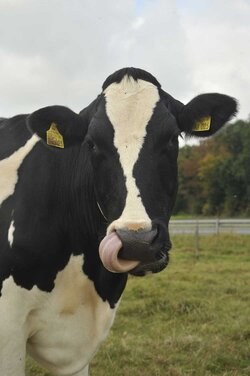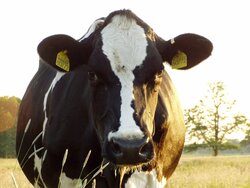Expertise
How can we measure animal welfare?
Angela Bergschmidt | 11.07.2022
Animal welfare can be measured – using a variety of indicators. But a generally accepted set of indicators is not available yet.
According to David Fraser, animal welfare is a multidimensional concept comprising health, behaviour and the emotional state of an animal. This perception is also evident in the "Five Freedoms" of the British Farm Animal Welfare Council (FAWC), which forms the basis for various measurement and evaluation systems for animal welfare. The concept offers an approach for the practical measurement of animal welfare in animal husbandry. The five freedoms are:
- Freedom from hunger or thirst by ready access to fresh water and a diet to maintain full health and vigour
- Freedom from discomfort by providing an appropriate environment including shelter and a comfortable resting area
- Freedom from pain, injury or disease by prevention or rapid diagnosis and treatment
- Freedom to express (most) normal behaviour by providing sufficient space, proper facilities and company of the animal's own kind
- Freedom from fear and distress by ensuring conditions and treatment which avoid mental suffering.
Indicators are used for the measurement of the various aspects of animal welfare. Different forms of indicators can be distinguished:
- Resource-based indicators provide, for example, information about housing systems and space allowance.
- Management-based indicators relate to practices such as dehorning of cattle or castration of pigs, as well as to the feeding and handling of animals.
- Animal-based indicators are measured directly on the animal; examples are foot-lesions in broilers, lameness in dairy cows, or behavioural disorders such as bar biting in sows.
A generally accepted set of indicators for the monitoring and evaluation of animal welfare is not available yet. Instead, a number of indicator systems have been developed. These are designed for different user groups and purposes: for policymaking and scientific policy advice, operational planning or on-farm monitoring as well as product identification (animal welfare labels).
A prominent example for a predominantly animal based indicator system are the WelfareQuality® protocols which have been developed for on-farm monitoring and labelling purposes. A German resource-based system is the National Assessment Framework for Animal Husbandry which combines an environmental and animal welfare assessment using resource-based indicators. It has been developed to provide reliable information on the different housing systems for planning commissions and building authorities.
We have developed a set of indicators for results-oriented animal welfare payments and organic farming for dairy cows.










